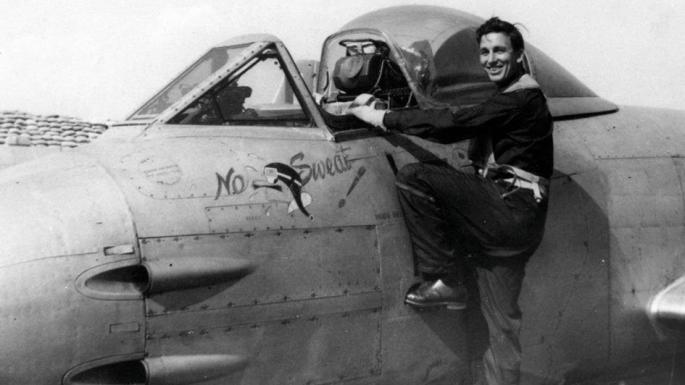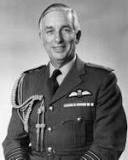Sir Keith Williamson (OB 1938-41)
With thanks to Geoff Crome (OB 1939-47) who knew Keith from the age of 3/4.
Sir Keith was at Bancrofts School from 1938-41 and went on to have a distinguished career in the RAF.
He died age 90 on 2nd May 2018.


Obituary (Courtesy of The Times Newspaper)
The Falklands war was widely seen as a victory for the Royal Navy, but as commander-in-chief of the Royal Air Force during the conflict, Sir Keith Williamson felt that his men did not get the credit they deserved.
“At first the navy wanted it all to themselves,” he recalled of the conflict, “which was unfortunate.” However, Strike Command landed the first blows with the bombing of the runway at Port Stanley airport by Vulcans flying from Ascension Island. It was the RAF’s longest operational raid.
“We were showing them that we had the reach to strike Argentina,” he said. “The fact that it would have been politically unacceptable had nothing to do with it.” The operation led to the withdrawal of Argentine fighter defences from the islands to the mainland.
Harriers later supplemented the Fleet Air Arm but, Williamson recalled: “The navy were very sensitive about us getting into the limelight at all, and one has to accept that in the middle of a war one doesn’t want to start raising interdepartmental rivalries. The major lesson from the Falklands war was the same as the lesson from the Korean War: that air power was decisive.”
With the Falklands retaken, Williamson, who joined the RAF as an apprentice, became the first of those who had entered by that route to be chief of the air staff. In 1985, after three years as CAS, he was expected to become chief of the defence staff (CDS) after Field Marshal Lord Bramall.
Margaret Thatcher, however, chose that moment to break with “Buggins’ turn”, under which the three services held the appointment in rotation. The baton was handed to the first sea lord. For many years press and politicians had said the system should be scrapped; it was Williamson’s misfortune to be next in line when the government acted. It was suggested in some quarters that he had never looked right for the job. Naturally combative, he had won his spurs as an operational commander, not as a strategic thinker or “Whitehall warrior”.
He was fiercely loyal to the RAF and made no secret of his misgivings about the centralisation of power within the Ministry of Defence. With an energetic new defence secretary, Michael Heseltine, intent on building up the CDS at the expense of the separate chiefs of staff, Williamson’s temperament and left-of-centre views were out of fashion.
He was scathing about Heseltine’s reorganisation. “It had little to do with defence,” he said. “It had much more to do with Mr Michael Heseltine’s personal career, and I found that deeply offensive — and I still do.”
Keith Alec Williamson was born in Leytonstone, east London, to Percy and Gertrude. His imagination was fired by the dogfights over Essex during the Battle of Britain. “I can’t remember a time after the declaration of war when I didn’t want to be a pilot in the RAF.”
He went to Bancroft’s School, Woodford Green, but when his school was bombed he was evacuated to Market Harborough, in Leicestershire, where he attended grammar school. He had joined the Air Training Corps and, just before his 17th birthday, he enlisted as an RAF apprentice. After qualifying as a radio fitter at Cranwell in Lincolnshire in 1948, he was selected for a flight cadetship, passing out in 1950. “I’m not sure I was ever going to be a good radio fitter,” he recalled wryly. He was posted to RAF Fassberg in Germany. “It was a particularly exciting time. We’d just recovered from the Berlin Airlift, the Korean War had started and the RAF was expanding.” They were flying five or six sorties a day. “The whole of Germany was our low-flying area.”
At one point a Lincoln was shot down on a border patrol, and he and his comrades were ordered to fly around the area, ready to engage. “To a young man, that just heightened the exhilaration.”
He next volunteered for service in Korea with the Royal Australian Air Force, for whom he flew a number of sorties in Meteors, which he described as “a terrible aeroplane . . . I didn’t feel I was hastening the end of the war.”
In 1953 he married Patricia Anne Watts, the daughter of a wing commander. They had two sons, Timothy and David, who lead private lives, and twin daughters, Anne and Susie. Susie died in 2015.
Williamson almost left the service, along with many of his colleagues, after the defence white paper of 1957, which ended national service and led to the disbanding of many RAF squadrons. Duncan Sandys, author of the white paper, “did more damage to this country’s ability to defend itself than any single person since Napoleon,” he said.
Williamson might have departed, but he was offered a flight commander’s post and thereafter rarely looked back. He commanded his first squadron at Leuchars in Fife (1966-68), flying supersonic Lightnings. He was awarded the Air Force Cross in 1968.
In 1978 he was put in charge of RAF Support Command at Brampton in Cambridgeshire. He sanctioned a TV documentary series about pilot training, Fighter Pilot, from which the RAF did not emerge with great credit. Yet as he later put it: “If you look in the mirror and you don’t like the image, you don’t blame the mirror.”
In 1980 he moved to Strike Command, and was in charge of the RAF during the Falklands war. Postwar concerns dominated the first half of his three-year reign as CAS. The hitherto neglected islands suddenly became a defence priority. Williamson took over in autumn 1982 and, after a visit to the islands, improved radar defences. He also insisted on basing Phantoms in the South Atlantic and persuaded his political masters to accept the need for a new airfield at Mount Pleasant.
He argued the case for the new European fighter aircraft and led the RAF challenge to Heseltine’s centralisation of policymaking. A number of his contemporaries felt he fought this dogfight too ferociously for the good of the service, as well for his own. In misjudging the strength of the tide against him, Williamson exposed the flaw which, in the opinion of his critics, made him unsuitable for the last great honour that was supposed to be awaiting him.
He retired to the country in 1985, to play golf, sail and watch rugby, on which he was eloquent and informed.
If there is a single message to be taken from his career, it is that we neglect our air capability at our peril. “Command of the air prevents defeat,” Williamson said, “as in every war since aeroplanes first appeared over the battlefields of Flanders. I believe that, bang for buck, you get far more value for money investing in the air.”
Sir Keith Williamson, GCB, AFC, Marshal of the RAF, was born on February 25, 1928. He died of undisclosed causes on May 2, 2018, aged 90
